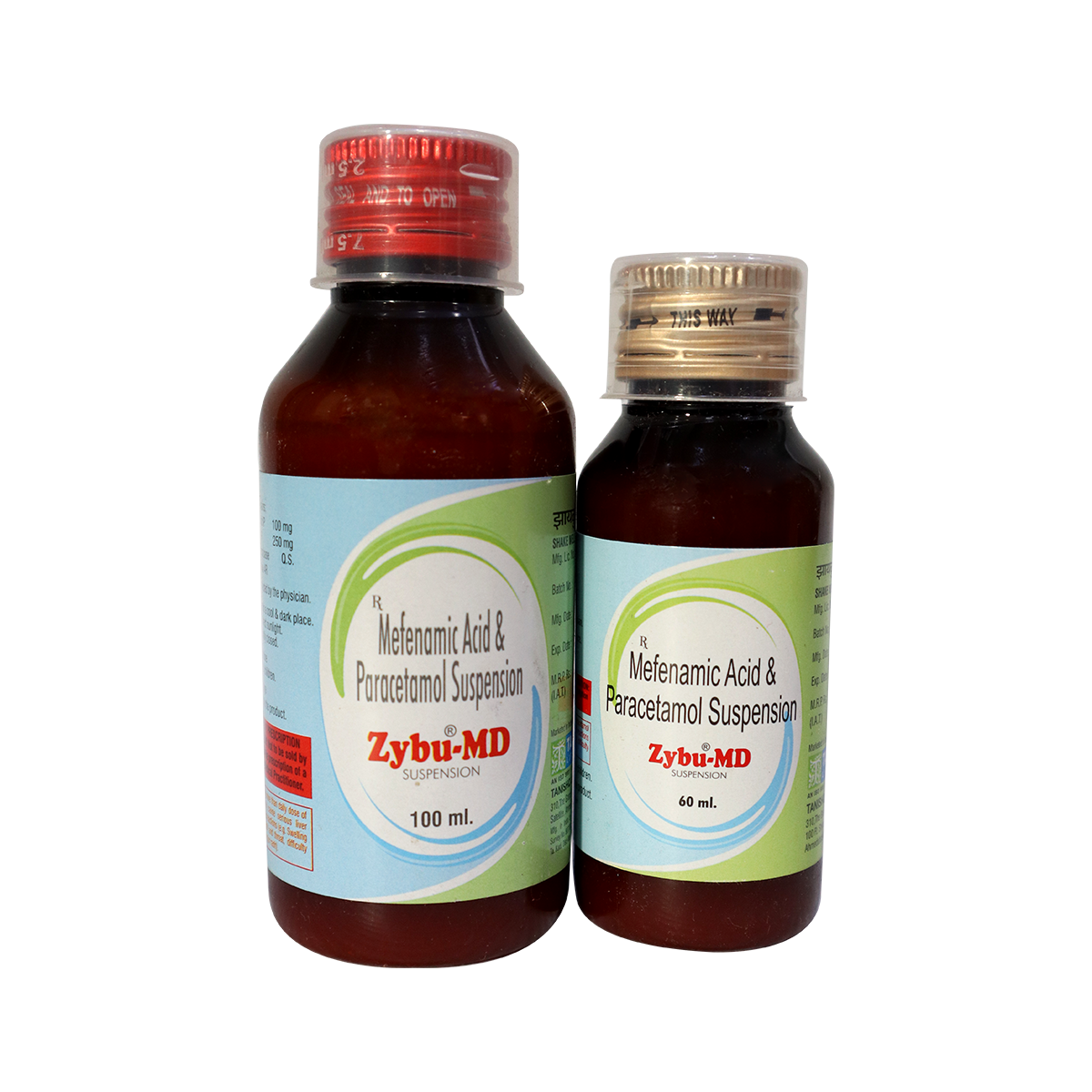
Zybu-MD
This is a combination liquid formulation of Mefenamic Acid (100 mg) and Paracetamol (250 mg) per 5 ml. It is designed to provide effective relief for both pain and fever. The Mefenamic Acid component is a nonsteroidal anti-inflammatory drug (NSAID) that helps reduce pain and inflammation, while Paracetamol (also known as Acetaminophen) works as a pain reliever and fever reducer.
- Mefenamic Acid: An NSAID that reduces pain, inflammation, and fever by inhibiting enzymes (COX-1 and COX-2) involved in the production of prostaglandins, chemicals that cause pain and inflammation.
- Paracetamol: An analgesic and antipyretic that reduces pain and fever by blocking the action of prostaglandins, primarily in the brain.
- Recommended Usage
Indications
This combination is commonly used to treat:
Pain relief for conditions such as:
Headaches, toothaches, muscle pain, back pain, joint pain.
Post-surgical pain or pain from injuries like sprains and strains.
Dysmenorrhea (painful menstruation).
Dosage and Administration
Adult Dosage:
Typically, adults take 10-20 ml (which contains 200-400 mg of Paracetamol and 50-100 mg of Mefenamic Acid) every 6-8 hours as needed.
Maximum daily dose: Do not exceed 4 doses per day, with a maximum of 4000 mg of Paracetamol and 400 mg of Mefenamic Acid within 24 hours.
Pediatric Dosage: Dosage depends on the child's age and weight. A general guideline is:
o Children 12 years and older: 10 ml (containing 250 mg of Paracetamol and 100 mg of Mefenamic Acid) every 6-8 hours as needed.
o Children 6-12 years: Typically 5-10 ml (containing 125-250 mg of Paracetamol and 50-100 mg of Mefenamic Acid) every 6-8 hours as needed
o Children 2-6 years: 2.5-5 ml (containing 62.5-125 mg of Paracetamol and 25-50 mg of Mefenamic Acid) every 6-8 hours as needed.
Administration Instructions:
o Shake the bottle well before use to ensure the medication is evenly mixed.
o Use a measuring spoon, oral syringe, or measuring cup to administer the correct dose.
o If giving the medication to a child, ensure the correct dose based on age or weight and follow the instructions provided by your healthcare provider.
Precautions
Gastrointestinal (GI) Issues: Mefenamic Acid, being an NSAID, can cause stomach irritation, ulcers, and gastrointestinal bleeding. Use with caution in individuals with a history of GI ulcers, gastritis, or bleeding disorders.
Liver and Kidney Disease: Both Paracetamol and Mefenamic Acid are metabolized by the liver and kidneys, so they should be used with caution in individuals with liver or kidney impairment.
Cardiovascular Risk: NSAIDs, like Mefenamic Acid, may increase the risk of heart attack and stroke, particularly with long-term use or in people with preexisting cardiovascular conditions.
Pregnancy and Breastfeeding:
o Paracetamol is generally considered safe during pregnancy and breastfeeding, but should be used at the lowest effective dose and for the shortest time possible.
o Mefenamic Acid should generally be avoided during the third trimester of pregnancy as it may harm the developing fetus. Always consult a doctor before using during pregnancy or while breastfeeding.
Alcohol Use: Paracetamol can lead to liver damage if combined with excessive alcohol consumption. NSAIDs like Mefenamic Acid may also increase the risk of gastrointestinal bleeding when used with alcohol.
Allergic Reactions: Although rare, some individuals may experience allergic reactions, such as skin rashes, swelling, or difficulty breathing. Discontinue use and seek medical attention immediately if any of these symptoms occur.
Overdose Risk: Paracetamol overdose can cause severe liver damage, and Mefenamic Acid overdose can lead to stomach and kidney issues. If an overdose is suspected, seek immediate medical help.
